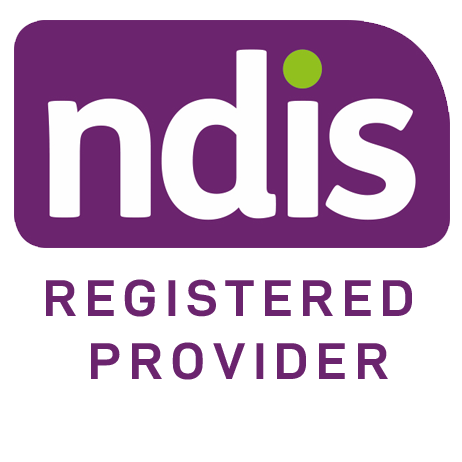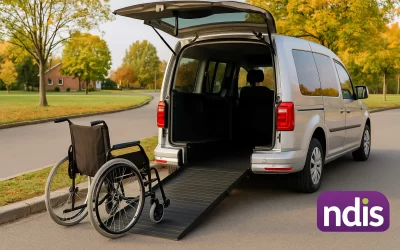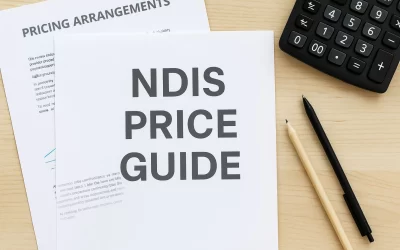Disability Support Pension (DSP) in Australia. The DSP functions as a key payment method that provides financial aid for disabled workers who cannot earn income because of physical impairment, intellectual disability, or psychiatric illness.
Many people wonder about the payment limit for financial assistance through the DSP. The payment rate for the Disability Support Pension depends on individual circumstances, but this can help you prepare for future financial needs.
This blog provides a comprehensive overview of Disability Pension allocation patterns per fortnight, describing existing levels and projected modifications for 2025.
We will discuss the various facts about DSP eligibility requirements before we discuss the upcoming Centrelink pension rise in 2025. Moreover, this will allow it to determine its obligation toward DSP (Disability Support Pension) recipients.
Disability Pension Rates: How Much Will You Receive?
The Disability Support Pension can be broken down into a few components:
- Basic rate
- Pension supplement
- Energy supplement
The maximum weekly income for an eligible disabled individual aged 21 and above receiving Disability Support Pension totals $860.60. You can get a pension supplement payment of $69.60 and an energy supplement payment of $14.10 after receiving the basic rate. Together, these payments amount to a total of $944.30 every fortnight.
The scheduled payments differ based on marital status and dependent circumstances. The Disability Support Pension rate depends on your homeowner status and the number of dependents you support, which modifies your payment through different supplement allowances.
During 2025, the Centrelink pension rates will change because of upcoming increases in the permanent allowance. Budgetary funding by the Government includes several changes meant to adjust pension payments correspondingly with inflation rates to enable beneficiaries to maintain necessary living expenses.
The 2025 Centrelink benefit increase should lead to higher payments distributed to Disabled Services Pensions beneficiaries.
What Is the Centrelink Pension Increase 2025?
The upcoming Centrelink pension increase 2025 will lead to exaggerated Disability Support Pension payments. These adjustments typically occur twice yearly: once in March and once in September. The adjustments follow inflation rates and cost of living adjustments to increase the Disability Support Pension available for recipients to manage higher prices.
Government officials revealed final payout figures for 2025 a few months before the yearly adjustment. You can find the most recent details about payment increases by monitoring official communication from Centrelink.
A significant pension increase provides essential stability to people with a fixed income. It allows Disabled Support Pension recipients to maintain decent living standards while battling rising costs for necessities like food, family shelter, and utility bills
Centrelink Payment Increase: What Does It Mean for You?
The Disability Support Pension’s fortnightly payments receive higher amounts through Centrelink payment adjustments that keep pace with present financial circumstances.
For disability Support Pension recipients, the payment boost maintains income support levels in line with inflation so they can afford basic living expenses.
Reported intervals for increases typically rise during March and September; therefore, tracking future adjustments becomes significant for 2025. The Centrelink payment increase allows your fortnightly benefits to increase sufficiently to handle basic expenses most effectively.
People whose income needs exceeded existing amounts may receive relief through this increase because of inflation and increasing living costs. The pension boost decided by Centrelink will give Disability Support Pension recipients enough money to handle their day-to-day expenses effectively.
Eligibility for the Disability Support Pension
To be eligible for the Disability Support Pension, you must meet certain non-medical and medical criteria:
1. Non-Medical Criteria:
- To qualify for the Disability Support Pension, your age should range from 16 to the pension age of 67.
- The residency requirements include at least consecutive ten-year residence or a combination of ten-year residence with at least five years straight.
- The process starts with passing the income and assets test, which requires that your financial resources stay under prescribed thresholds.
2. Medical Criteria:
- Your medical condition needs to limit your ability to work 15 hours per week or more.
- To receive this benefit, you need an illness that specialists expect will persist for multiple years.
- To qualify for the Disability Support Pension, you must undergo a medical assessment to obtain an Australian Impairment Table rating of 20 points or higher.
Individuals can submit their DSP application through the government’s official website, by telephone, or by visiting a Centrelink service center.
How Are Centrelink Payments Calculated?
The money amounts you receive from Centrelink for the Disability Support Pension depend on both your source of income and your financial assets. Sources of additional earned income will lower the amount of DSP benefits you receive. An excess of assets in your possession can lead to reduced payments or complete denial of any allowance.
- Income limits: You can get your entire allowance if you receive DSP payments alone and earn less than $178 per fortnight. Each dollar above $178 reduces payment benefits by $0.50.
- Asset limits: To receive the maximum DSP benefit, you must maintain your assets below the specified thresholds. Single homeowners whose assets total less than $268,000 can receive benefits. Non-homeowners must have assets under $482,500 to remain eligible for the benefit.
Jobs agencies accept special asset hardship applications from recipients struggling to comply with the established financial standards. Centrelink payments pension supports the disabled in many ways.
Additional Disability Support Services:
If you’re not eligible for the Disability Support Pension, there are other forms of assistance that you might qualify for:
1. JobSeeker Payment:
Joint Seeker payments become available when illness or injury temporarily prevents someone from doing their job.
2. Carer Payments and Allowances:
Caring for someone with a disability qualifies you for Carer Payments and Carer Allowances through the Government’s disability support scheme.
3. National Disability Insurance Scheme (NDIS):
The National Disability Insurance Scheme covers payment for disability-related services such as personal care support, therapy, and equipment. Although it functions differently from direct income funds, it offers necessary disability-oriented services.
How to Apply for the Disability Support Pension?
All channels, including online applications, new requests, and visits to service centers, remain open for eligible participants to submit Disability Support Pension applications. Supporting documents, including medical proof, financial records, and employment history details, will be necessary to complete your application.
The Disability Support Pension is a vital support option for Australian citizens whose medical condition or permanent disability keeps them from maintaining employment. Knowledge of disability pension rates, a clear understanding of Centrelink’s payment calculation system, and the proper application procedures will help you succeed and receive the support needed. Stay informed about the upcoming Centrelink pension increase in 2025 because these changes will create meaningful impacts on your financial situation.
You can find additional information at official website.
FAQs:
1. How much can a disability pensioner earn in Australia?
Disability pensioners in Australia can earn up to $180 per fortnight (as of 2025) without affecting their payment. However, if one’s earnings exceed the mentioned amount, your pension amount may be reduced. Moreover, it also depends on the circumstances, like whether you want a full or partial pension.
2. Can I live overseas on an Australian disability pension?
People outside Australia can receive disability pension care if they follow certain conditions. If you are moving to a country with a social security agreement with Australia, you may still receive your payments. Your payments risk suspension once you move to a country without a social security agreement with Australia.
3. Does disability pension stop at 65 in Australia?
Australians receiving disability pensions maintain receipt of benefits after reaching age 65 without the need for additional action. The Age Pension might become your new payment option based on what happens with your situation. Your final pension payment could transform because the Age Pension system performs unique assessments regarding Disability Pension standards.
4. What is a 100% disability pension?
A 100% disability pension is the highest financial support for individuals with a permanent and severe disability. Individuals assessed with this severe type of disability automatically receive a full pension payment since their condition stops them from working and living independently.
5. What is the new rule for disability pension?
Programs that provide disability pensions must adjust their criteria periodically. The government set new income thresholds that enable disability pension recipients to work without affecting pension reductions. The new changes established fewer obstacles in obtaining pension eligibility for everyone who experiences periodic changes in their health.
6. When will Centrelink payments increase?
Centrelink payments, including disability pension payments, enhance their values during March and September of each year. Government grant increases occur through two metrics to match cost of living changes: Consumer Price Index (CPI) movement and wage growth adjustments. To check specific dates and amounts of rate increases for Centrelink payments check the website or speak to receiving agencies directly.
We at Premier Home Care provide disability Care services in Australia. Call us if you need assistance with NDIS-related queries or have any further questions. We are a registered NDIS provider based in Sydney.
Reference links:
https://www.servicesaustralia.gov.au/payment-rates-for-disability-support-pension?context=22276



